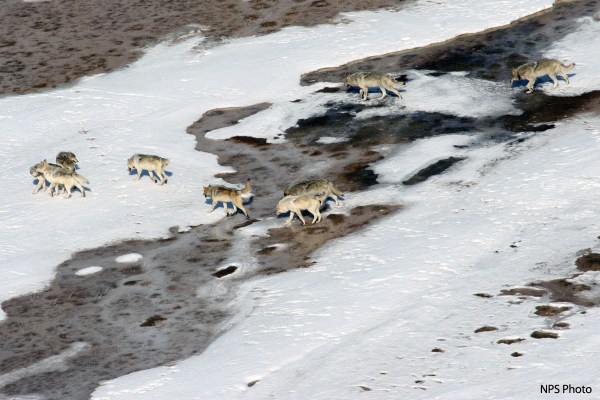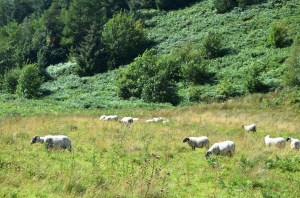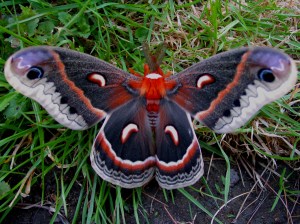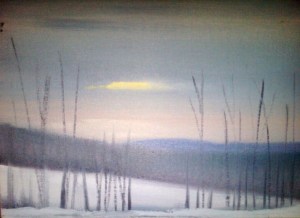Tonight, I’m reading from my new book, Wine-Dark Sea: New & Selected Poems & Translations in Terrain.org’s reading series. You can join us by registering here for the event. Hope to see you there!
I’ll be reading with two other poets, Joe Wilkins and Betsy Aoki. Betsy is an associate poetry editor with Terrain, which has published several of my poems over the years. Her colleague, Derek Sheffield, will be our host. Derek is a fine poet in his own right, and he has a new book out called Not For Luck, which poet Mark Doty selected for the Wheelbarrow Books Poetry Prize, and it was published by Michigan State University Press.
Derek has been called “a post-romantic nature poet,” in a recent review and, as the reviewer went on to say, his “poems are colored by a sense of separateness from nature and a recognition that language itself impedes any immediate communion with the world.” (Those of you familiar with my book Dwelling: an ecopoem, will understand why I find Derek’s work interesting and simpatico.)
I should also mention that he wrote a great blurb for my new book, for which I am truly grateful. And he has some of the longest poem titles I’ve ever seen (the one below is not even close to the longest), which is always fun.
Here is Derek Sheffield’s
“At the Log Decomposition Site in the H.J. Andrews Experimental Forest, a Visitation”
Below thick moss and fungi and the green leaves
and white flowers of wood sorrel, where folds
of phloem hold termites and ants busily gnawing
through rings of ancient light and rain, this rot
is more alive, says the science, than the tree that
for four centuries it was. Beneath beetle galleries
vermiculately leading like lines on a map
to who knows where, all kinds of mites, bacteria,
Protozoa, and nematodes whip, wriggle, and crawl
even as my old pal’s bark of a laugh comes back:
“He’s so morose you get depressed just hearing
his name,” he said once about a poet we both liked.
Perhaps it’s the rust-red hue of his cheeks
in the spill of woody bits. Or something in the long shags
of moss draping every down-curved limb. He’d love to be
right now a green-furred Sasquatch tiptoeing
among the boles of these firs alive since the first
Hamlet’s first soliloquy. He’d be in touch,
he said in an email, as soon as the doctors cleared him.
When this tree toppled, the science continues, its death
went through the soil’s mycorrhizae linking the living
and the dead by threads as fine as the hairs appearing
those last years along Peter’s ears, and those rootlets
kept rooting after. That email buried in my Inbox.
Two lines and his name in lit pixels on my screen.
What if I click Reply? That’s what he would do,
even out of place and time, here in the understory’s
lowering light where gnats rescribble their whirl
after each breath I send.
–Derek Sheffield, from Not For Luck, originally appeared in Otherwise Collective’s Plant-Human Quarterly

Wolf pack, Yellowstone. (NPS Photo)
In the title poem to her latest book of poems, Trophic Cascade, Camille T. Dungy catalogues the reemergence of species in the wake of the reintroduction of gray wolves to Yellowstone National Park.
In ecology, “trophic” refers to the relationships between species in a food chain or web. While in some respects this is both a list poem and a nature poem, it builds (or cascades) with such a “degree of motion and momentum” (to quote the poet in an essay) that it becomes something more.
Dungy mimics the kind of rhythmic swells leading to a break at the end of her line that one sees or hears in an ocean tide, and it’s the kind of rhythm and cadence the poet says she wants to achieve in her poems. But what I love most about this poem is how Dungy pivots at the end—in a way representative of how so much of her poetry works—with what she calls, in the same essay to which I refer above, an “inevitable surprise.”
“We know the line will break, and we might even have an idea of where and how the physical boundary might present itself on the page, and that is part of the beauty,” Dungy writes. “But for that beauty to work to its full potential there must also be much that comes as a surprise.” That surprise, in this case, puts a whole new perspective on our most basic trophic relationship.
Camille Dungy is the author of three other books of poetry, including Smith Blue, Suck on the Marrow, and What to Eat, What to Drink, What to Leave for Poison, as well as a fabulous memoir-in-essays, Guidebook to Relative Strangers. She also edited the important anthology, Black Nature: Four Centuries of African American Nature Poetry, and has received an American Book Award, two Northern California Book Awards, and an NEA Fellowship.
Here is Camille T. Dungy’s poem, “Trophic Cascade”
After the reintroduction of gray wolves
to Yellowstone and, as anticipated, their culling
of deer, trees grew beyond the deer stunt
of the midcentury. In their up reach
songbirds nested, who scattered
seed for underbrush, and in that cover
warrened snowshoe hare. Weasel and water shrew
returned, also vole, and came soon hawk
and falcon, bald eagle, kestrel, and with them
hawk shadow, falcon shadow. Eagle shade
and kestrel shade haunted newly-berried
runnels where mule deer no longer rummaged, cautious
as they were, now, of being surprised by wolves. Berries
brought bear, while undergrowth and willows, growing now
right down to the river, brought beavers,
who dam. Muskrats came to the dams, and tadpoles.
Came, too, the night song of the fathers
of tadpoles. With water striders, the dark
gray American dipper bobbed in fresh pools
of the river, and fish stayed, and the bear, who
fished, also culled deer fawns and to their kill scraps
came vulture and coyote, long gone in the region
until now, and their scat scattered seed, and more
trees, brush, and berries grew up along the river
that had run straight and so flooded but thus dammed,
compelled to meander, is less prone to overrun. Don’t
you tell me this is not the same as my story. All this
life born from one hungry animal, this whole,
new landscape, the course of the river changed,
I know this. I reintroduced myself to myself, this time
a mother. After which, nothing was ever the same.
c) 2015 Camille T. Dungy, from Trophic Cascade, Wesleyan University Press, 2017
Used by permission of the author.
My Poem “Deserted Sheep”
January 7, 2016

Sheep in the Scottish Borderlands, August 2014. Photo by SEA
Twice in my life I wanted to raise sheep. I’m not sure why. Perhaps it is an interest stemming from deep within my Scottish and Portuguese heritage.
The first time, I was as a teenager outside of Rochester, New York. I considered enrolling in the organic agriculture program at Goddard College in Vermont, where I’d learn animal husbandry and then get a piece of land where I could raise a flock. I heard that Canada had a generous homesteader program and wrote to various provincial governments. (I still have a couple of their responses.)
The second time was in 1992, I had just moved to Garrison, New York, into a converted ice house on the old Vanderbilt-Webb estate. I bought Raising Sheep the Modern Way by Paula Simmons and a few other books and looked into buying a few starter sheep from a neighbor. (I still can’t part with my copy of Simmons’s book.)
While my poem, “Deserted Sheep,” which was part of a group of three poems that won the Nebraska Review Award in 1997, was certainly influenced by my experiences in New York’s countryside, thinking about raising sheep, it was a very different landscape that provided the inspiration.
I was walking the hills outside of Giessen, in what was then West Germany, in the spring of 1987, when I stumbled upon the sheepfold described in the poem. The sheep were alone, except for each other, grazing within a small, orange plastic enclosure.
Like many of the poems I wrote at the time, the early drafts were heavily influenced by my attempts to learn the German language through reading its poetry — no easy task. This course of study had a deleterious effect on my writing at the time, as I’ve described elsewhere, and it took me a long time to get my native tongue back to its proper place; not to mention my syntax, grammar, and word order!
By the time I arrived at the version that appeared in the Nebraska Review and, later, in my book Fallow Field, the result was very different, after many stumbles and headlong bumps like those lambs in the poem.
Perhaps one day I will retire to the Azores and raise sheep. Now that my wife, Samantha, has taken up knitting we could use the extra wool and lamb kofta is a favorite dish of ours. Here is my poem,
Deserted Sheep
Lambs, jostled, forgive
the wolf, break
its taste in lamb
into a toddler’s gallop,
bumping headlong
into thick-piled ewes–
lanolin slicking their noses, as
they stumble on the fescue
dotting the valley,
a pointillist’s landscape.
No shepherd, no sheep dog,
no gate to enter; a small,
orange plastic snow fence,
neatly staked at four corners
with steel posts,
gives form to the sheepcote.
The last ounce of sun
a violet tremor the wolf
forgives, lingering
along the western ridge,
the shepherd’s fear
returning to the valley.
A ram, brown and flocculent,
secures a silent corner
of the fold — eyes intent
upon a slow-moving shadow.
–Scott Edward Anderson
Misidentifying Moths and My Poem “Summer Love”
June 23, 2012
My old friend and former decompositionalist compatriot, Penny Perkins, posted a gorgeous picture of a moth on Facebook today, which she misidentified as an “Endangered Emperor Moth.”
I recognized her mistake right away. The moth was, in fact, a Luna moth (Actias luna) and not Saturnia pavonia.
I noted this on her post in the comments section and also the fact that neither moth is endangered. She thanked me and then asked if, perchance, I had any poems about moths. I did or do.
(At least, I thought it was about moths. I’m never sure anymore what I was writing about when I wrote a poem!)
Here is my poem “Summer Love”:
The female cecropia moth,
Hyalophora cecropia, emerges
As in a stop-action film: swollen
Abdomen shrinking while wings
Rise, fill, and form. Pheromones
Kick in, attracting a male from miles away.
They couple quickly—how easy love can be.
Linked like this, at terminus,
They are most vulnerable to predators.
They will stay this way, available
To each other, for hours—
Then vanish as memory fades.
–Scott Edward Anderson
Juvenilia: “Snow Sleeping November”
November 19, 2011
JUVENILIA
1: compositions produced in the artist’s or author’s youth
2: artistic or literary compositions suited to or designed for the young
Origin of JUVENILIALatin, neuter plural of juvenilisFirst Known Use: 1622
As the Wikipedia entry for Juvenilia explains: “the term was first used in 1622 in George Wither‘s poetry collection Ivvenilia. Later, other notable poets, such as John Dryden and Alfred Lord Tennyson came to use the term for collections of their early poetry. Jane Austen‘s earlier literary works are also known by the name of Juvenilia. An exception to retrospective publication is Leigh Hunt’s collection Juvenilia, first published when he was still in his teens.”
One of my earliest extant poems, written when I was 15, came to my attention recently. The poem is called “Snow Sleeping November.” I was surprised by its language and resonance, although some of it seems over-written and bears too heavy an influence of Whitman, Frost, Hopkins, and perhaps Stephen Crane.
I can still see the cabin in New York’s Finger Lakes that provided its inspiration.
Here is my poem,
“Snow Sleeping November”
I realize the briskness of this November eve,
the quiet, complacency of stiff snow,
the darkness of full‑breasted snowclouds,
all of us retaining warmth
like soapstone.
My cup is full of hot water
the wood in the fire
gleams like cat’s eyes & gives-off a
sun‑like warmth‑‑radiant, welcoming.
Short days & long, frozen nights,
girding my boots
for the crisp winterchill,
wind driving drafts up my nose.
The sparkling, icy water
and trees stiff in the dead weight
of snow‑leaden branches.
Poets crawling at the clouds
pulling snow groundfast‑‑
Those November trees!
–Scott Edward Anderson
The painting is a sketch by my friend Lisa Hess Hesselgrave from my personal collection. You can see more work by Lisa at LisaHesselgrave.com


